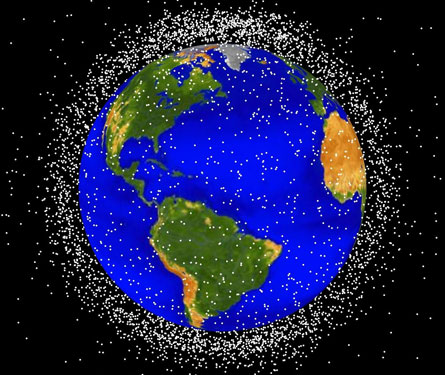The orbital highways above Earth have been getting more crowded for years, but until February 10 there had been no local big bang.

Two large satellites — a functioning U.S. device and a nonoperating Russian instrument — collided in Earth orbit about 800 kilometers over Siberia on February 10, creating a swarm of some 600 chunks of debris. “This is the first time we’ve had an accidental collision of this magnitude,” says Eugene G. Stansbery, an orbital debris expert at NASA’s Johnson Space Center in Houston.
The pieces have remained in the orbital plane of each satellite but are spreading out in altitude. Stansbery said that computer simulations indicated only a slight risk that some of the spreading debris could hit the International Space Station, which orbits 350 km above Earth. Debris is denser at 600 km above Earth, where the Hubble Space Telescope orbits, but the observatory is a much smaller target, he added.
The U.S. satellite was an Iridium 33, a common telecommunications spacecraft. The Russian device was a Kosmos 2251. The crash destroyed both satellites, which had orbits about 90 degrees apart relative to Earth.
Over the past two decades, three much smaller satellite crashes have occurred, Stansbery added. In 1991, a nonfunctioning Russian navigation satellite hit debris from another Russian satellite. Five years later, a French satellite called Cerise collided with the body of a French rocket. Most recently, in 2005, a U.S. rocket body collided with the third stage of a Chinese launch vehicle. But each of those collisions generated only one or two pieces of debris.




